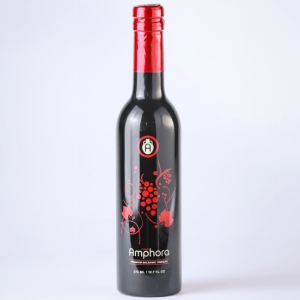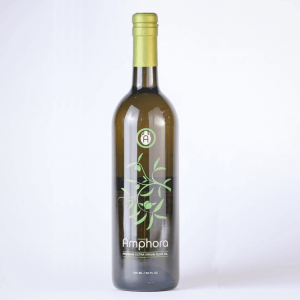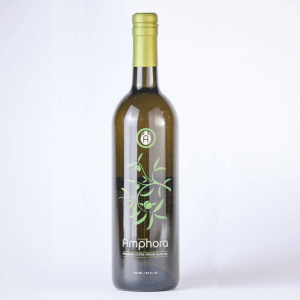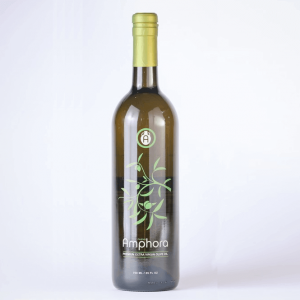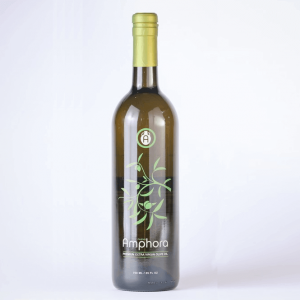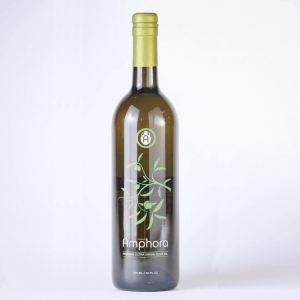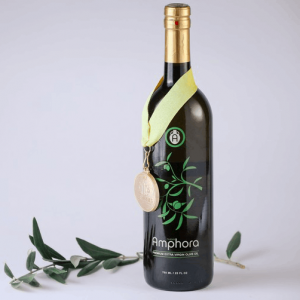Aged Elderflower White Balsamic Vinegar
Elderflower insufed white balsamic vinegar has delicate notes of honey suckle. Perfect to combine with lemon olive oil for a delicious emulsion!
Herbs De Provence Olive Oil
Notes of savory thyme and bay leaf, our all natural Herbs de Provence is a show stopper when drizzled on chicken, rubbed on turkey before roasting, for bread dipping and aioli.
Wild Dill Olive Oil
Our highly aromatic, vibrant, infused Wild Dill olive oil is a must-have Mediterranean culinary staple. So versatile! We recommend using it in dressings, marinades, chopped salads, hummus, drizzled over vegetables, fish, poultry, or eggs, as well as in soups, creamy sauces, and as a base for aioli, homemade mayonnaise, and tartar sauce. Great for baking in rolls and breads. Delicious in potato dishes. Our Dill olive oil pairs well with Sicilian Lemon white Balsamic, or Champagne Vinegar for a delicious light vinaigrette. It can also be paired with our classic dark Traditional Balsamic, as well as the Pomegranate dark Balsamic, just to name a few.
Basil Olive Oil
Fresh, green and herbal. Basil and olive oil are two integral ingredients in Mediterranean cooking and it was just obvious to us that the two would be wonderful together. Notes: Try it on a summer salad or caprice and let your taste buds travel to the shores of the Mediterranean.
Garlic Olive Oil
Our Garlic Olive Oil actually gives off the flavor of pungent, fresh garlic. Since garlic and olive oil are almost always used together in Mediterranean cooking, you can use this in just about anything.
Persian Lime Olive Oil
Zesty Persian lime is married with extra virgin olive oil for an unbelievably fresh, fragrant burst of citrus. This infused oil will take your recipe to the next flavor dimension. Fantastic with fish, poultry, marinades and dressings. Great when paired with our Blackberry-Ginger balsamic vinegar.
Aged Umeboshi Plum White Balsamic
Sweet lovers of all kinds – this is your balsamic! Hints of apricot combine with floral notes of golden ripe Japanese plums and sweet/tart aged white balsamic from Modena, Italy to make a big, bright beautiful vinegar, sure to appease plum loving sweet-tooths.
Black Garlic & Ginger
Umami, mild sweetness of black garlic combines with the spicy, earthiness of ginger to create this delicious infused olive oil. Earthy, savory and sweet, it makes an amazing marinade, dressing and finisher for chicken and fish fresh off the grill. It also makes a super tasty stir-fries and sauces.
Aussie Lemon Olive Oil
Our Lemon Olive Oil is produced by crushing whole, fresh lemons with early harvest green olives at the time of harvest. Its bright and zesty flavor is perfect to sauté shrimp or scallops or to drizzle on chicken or fish. This whole fruit fusion can be used for baking and is fabulous in marinades, dressings and is even more aromatic on roasted, steamed or sautéed vegetables due to its concentrated flavor. Pair with the Lychee White Balsamic, Blueberry Dark Balsamic, Raspberry Dark Balsamic, Jalapeno White Balsamic, Fig Dark Balsamic and Pomegranate Dark Balsamic.
Greek Leek Olive Oil
Our (Whole Fruit Fused) Greek Leek olive oil uses fresh cut leeks cold fused with early green Koroneiki olives to preserve both the full flavor of the leek and the Koroneiki. The high concentration of Leek is why this uinque product is so robust, flavorful and aromatic, with a sweet oniony flavor and savory garlic notes. A fantastic oil for preparing or finishing any potato dish. Delicious in quiche. Great for finishing soups and stews and sauteeing vegetables. Perfect in an aioli and any herb-centric sauce!
Aged Suyo Cucumber White Balsamic
Our crisp, zippy Suyo Cucumber White Balsamic is quintessential in dressings, marinades, shrubs, agua frescas, vinaigrettes and more. Use it to add an exciting zing to your next caprese salad or add a splash to your next shrimp cocktail.
Pairs wonderfully with fused lemon olive oil, garlic olive, ginger and black garlic olive oil, lime olive oil, Baklouti chili olive oil, dill olive oil and more. The possibilities are endless.
(NEW) Peruvian Coratina (Robust – High Phenol – Spring Harvest 2024)
| Harvest: April 2024 ? Harvest Date: The fresher the better! Olive oils are healthier and more flavorful when they’re consumed fresh! | Bio-Phenols: 540 ? Polyphenols – Antioxidant substances found in EVOO. The higher the better! Polyphenols extend the shelf-life of an oil & also determine the “style” in terms of bitterness and pungency. Our high phenol oils are being recommended by health professionals all over the world. |
| Peroxide: 4.0 ? Peroxide: Peroxide Value – (PV) The lower the better! Must be equal or less than 20. The primary measurement of the rancidity of a particular extra virgin olive oil. PV is affected by procedures used in processing and storing of the oil. Our average PV at time of crush is around 4! |
Oleic: 71 ? Oleic Acid: Legal limit is 55%. The higher the better. Our average is around 77%! Our bodies absorb peroxidized fats we consume and incorporate them into your cells, oleic acid’s superior resistance to free radical attacks also protects your cell membranes, proteins, and DNA from being damaged, even as it protects the oil from spoiling. |
| Dags: 93.6 ? DAGS :DAGs are important shelf-life indicators and can be used to determine the shelf life (or lack thereof) of an oil at any time in its life. Fresh Olive Oil made from sound fruit should result in a DAG content of 85% or higher whereas the processing of rotten and or fermented olives will produce fresh oil with low DAGs indicating a very short shelf-life. | FFA: .25 ? FFA: Free Fatty Acid – The lower, the better. The IOC requires that this number be below 0.8 in order to be considered Extra Virgin grade. Our average is about 0.18! The lower the FFA, the higher the smoke point of the oil. |
(NEW) Peruvian Estate Reserve (Medium Intensity – Spring Harvest 2024)
| Harvest: April 2024 ? Harvest Date: The fresher the better! Olive oils are healthier and more flavorful when they’re consumed fresh! | Bio-Phenols: 420 ? Polyphenols – Antioxidant substances found in EVOO. The higher the better! Polyphenols extend the shelf-life of an oil & also determine the “style” in terms of bitterness and pungency. Our high phenol oils are being recommended by health professionals all over the world. |
| Peroxide: 3.8 ? Peroxide: Peroxide Value – (PV) The lower the better! Must be equal or less than 20. The primary measurement of the rancidity of a particular extra virgin olive oil. PV is affected by procedures used in processing and storing of the oil. Our average PV at time of crush is around 4! |
Oleic: 68 ? Oleic Acid: Legal limit is 55%. The higher the better. Our average is around 77%! Our bodies absorb peroxidized fats we consume and incorporate them into your cells, oleic acid’s superior resistance to free radical attacks also protects your cell membranes, proteins, and DNA from being damaged, even as it protects the oil from spoiling. |
| Dags: 93.5 ? DAGS :DAGs are important shelf-life indicators and can be used to determine the shelf life (or lack thereof) of an oil at any time in its life. Fresh Olive Oil made from sound fruit should result in a DAG content of 85% or higher whereas the processing of rotten and or fermented olives will produce fresh oil with low DAGs indicating a very short shelf-life. | FFA: .30 ? FFA: Free Fatty Acid – The lower, the better. The IOC requires that this number be below 0.8 in order to be considered Extra Virgin grade. Our average is about 0.18! The lower the FFA, the higher the smoke point of the oil. |
Portuguese Cobrançosa (Fall 2023 Harvest – Medium Intensity)
Portuguese Cobrançosa (Fall 2023 Harvest – Medium Intensity)
| Harvest: Sept/Oct 2023 ? Harvest Date: The fresher the better! Olive oils are healthier and more flavorful when they’re consumed fresh! | Bio-Phenols:450.2 ? Polyphenols – Antioxidant substances found in EVOO. The higher the better! Polyphenols extend the shelf-life of an oil & also determine the “style” in terms of bitterness and pungency. Our high phenol oils are being recommended by health professionals all over the world. |
| Peroxide: 6.16 ? Peroxide: Peroxide Value – (PV) The lower the better! Must be equal or less than 20. The primary measurement of the rancidity of a particular extra virgin olive oil. PV is affected by procedures used in processing and storing of the oil. Our average PV at time of crush is around 4! |
Oleic: 71.17 ? Oleic Acid: Legal limit is 55%. The higher the better. Our average is around 77%! Our bodies absorb peroxidized fats we consume and incorporate them into your cells, oleic acid’s superior resistance to free radical attacks also protects your cell membranes, proteins, and DNA from being damaged, even as it protects the oil from spoiling. |
| Dags: 95.6 ? DAGS :DAGs are important shelf-life indicators and can be used to determine the shelf life (or lack thereof) of an oil at any time in its life. Fresh Olive Oil made from sound fruit should result in a DAG content of 85% or higher whereas the processing of rotten and or fermented olives will produce fresh oil with low DAGs indicating a very short shelf-life. | FFA: .16 ? FFA: Free Fatty Acid – The lower, the better. The IOC requires that this number be below 0.8 in order to be considered Extra Virgin grade. Our average is about 0.18! The lower the FFA, the higher the smoke point of the oil. |
Our iconic Portuguese Cobrançosa displays savory notes of tomato leaf, bitter radicchio & pungent arugula with a lingering spicy finish. This is a delicious grassy olive oil that compliments a wide variety of dishes. It is also wonderful for dipping! Cobrançosa is one of the rarest olive cultivars in the world. Not to be missed! Savor & enjoy!
Portuguese Grand Reserva Cuveé (Medium Intensity – Fall Harvest 2023)
| Harvest: November 2023 ? Harvest Date: The fresher the better! Olive oils are healthier and more flavorful when they’re consumed fresh! | Bio-Phenols: 382 ? Polyphenols – Antioxidant substances found in EVOO. The higher the better! Polyphenols extend the shelf-life of an oil & also determine the “style” in terms of bitterness and pungency. Our high phenol oils are being recommended by health professionals all over the world. |
| Peroxide: 4.2 ? Peroxide: Peroxide Value – (PV) The lower the better! Must be equal or less than 20. The primary measurement of the rancidity of a particular extra virgin olive oil. PV is affected by procedures used in processing and storing of the oil. Our average PV at time of crush is around 4! |
Oleic: 72.4 ? Oleic Acid: Legal limit is 55%. The higher the better. Our average is around 77%! Our bodies absorb peroxidized fats we consume and incorporate them into your cells, oleic acid’s superior resistance to free radical attacks also protects your cell membranes, proteins, and DNA from being damaged, even as it protects the oil from spoiling. |
| Dags: 90 ? DAGS :DAGs are important shelf-life indicators and can be used to determine the shelf life (or lack thereof) of an oil at any time in its life. Fresh Olive Oil made from sound fruit should result in a DAG content of 85% or higher whereas the processing of rotten and or fermented olives will produce fresh oil with low DAGs indicating a very short shelf-life. | FFA: .23 ? FFA: Free Fatty Acid – The lower, the better. The IOC requires that this number be below 0.8 in order to be considered Extra Virgin grade. Our average is about 0.18! The lower the FFA, the higher the smoke point of the oil. |
Our Award Winning Grand Reserva Cuveé is comprised of Galega, Cobrancosa and Picual and represents our final fresh crop extra virgin olive oil from Portugal this season. An award winner! Complex. Delightfully Fragrant. Cut grass on the nose from Galega; tomato and stone fruit notes from Picuall and pronounced savory and floral flavors that linger from Cobrancosa (rose petal.) Note the brief peppery finish. A limited release – enjoy while it lasts!



